
JOURNAL OF CLUSTER SCIENCE
Scope & Guideline
Advancing Knowledge in Interdisciplinary Research
Introduction
Aims and Scopes
- Nanomaterial Synthesis and Characterization:
The journal covers various methods for synthesizing nanomaterials, including green synthesis, biogenic approaches, and chemical methods. Characterization techniques such as X-ray diffraction, electron microscopy, and spectroscopic methods are frequently discussed to understand the properties of these materials. - Biomedical Applications of Nanomaterials:
A significant focus is placed on the application of nanomaterials in biomedicine, including drug delivery systems, imaging agents, and therapeutic agents. Research often explores the efficacy of these materials against various types of cancer and their potential in wound healing. - Environmental Remediation and Catalysis:
The journal features studies on the use of nanomaterials for environmental applications, such as photocatalytic degradation of pollutants and heavy metal removal from wastewater. The catalytic properties of metal clusters are also a key area of interest. - Advanced Materials for Energy Applications:
Research on the application of nanomaterials in energy-related fields, such as photovoltaics, batteries, and supercapacitors, is highlighted. The journal discusses the synthesis of advanced materials that enhance energy conversion and storage efficiency. - Theoretical and Computational Studies:
The journal includes theoretical studies that employ computational methods to understand the properties and behaviors of nanomaterials at the atomic and molecular levels. This aspect complements experimental research, providing a more comprehensive understanding of nanomaterials.
Trending and Emerging
- Green and Sustainable Nanotechnology:
There is a significant trend towards the development of environmentally friendly synthesis methods for nanomaterials. Research focusing on utilizing natural resources and biological systems for the synthesis of nanoparticles is gaining momentum, reflecting a broader commitment to sustainability. - Multifunctional Nanomaterials:
Studies are increasingly exploring the multifunctionality of nanomaterials, particularly in biomedical applications where materials serve dual purposes, such as drug delivery and imaging. This trend highlights the need for materials that can address multiple challenges in healthcare. - Nanomaterials in Drug Delivery Systems:
The journal is seeing a rise in research dedicated to the design and optimization of nanocarriers for targeted drug delivery. This focus is driven by the need for more effective treatments with reduced side effects, particularly in cancer therapy. - Integration of Nanotechnology with Artificial Intelligence:
Emerging research is beginning to integrate AI with nanotechnology, particularly in the design and characterization of nanomaterials. This trend suggests a future direction where computational tools enhance the efficiency and effectiveness of nanomaterial applications. - Nanotechnology for Environmental Monitoring:
There is an increasing interest in using nanomaterials for environmental monitoring and remediation. Research highlights their role in detecting pollutants and degrading harmful substances, showcasing the potential of nanotechnology in addressing environmental challenges.
Declining or Waning
- Traditional Chemical Synthesis Methods:
There has been a noticeable decline in studies focusing on conventional chemical synthesis methods for nanomaterials. Researchers are increasingly turning to greener and more sustainable approaches, such as biogenic synthesis, which may explain this trend. - Basic Physical Properties of Clusters:
Research that solely focuses on the basic physical properties of clusters without practical applications or advanced functionalization is becoming less common. The trend is shifting towards applications that demonstrate the utility of these properties in real-world scenarios. - Non-Biomedical Applications of Nanotechnology:
While biomedical applications remain strong, there appears to be a waning interest in purely industrial or non-biomedical applications of nanotechnology, such as traditional manufacturing processes. Researchers are focusing on more innovative applications that integrate nanotechnology with health and environmental benefits.
Similar Journals

JOURNAL OF NANOPARTICLE RESEARCH
Advancing Knowledge in Nanoparticle ScienceJOURNAL OF NANOPARTICLE RESEARCH, published by SPRINGER, is a pivotal platform in the interdisciplinary field of nanotechnology, encompassing atomic and molecular physics, bioengineering, chemistry, condensed matter physics, and materials science. Operating since 1999 and converging through 2024, this journal presents cutting-edge research and innovations in nanoparticle science, aiming to bridge theoretical studies with practical applications. With a diverse scope that attracts articles ranked in various Q2 and Q3 category quartiles across its fields, including Bioengineering and Nanoscience and Nanotechnology, it ranks favorably within Scopus metrics, ensuring high visibility and impact among researchers. While the journal operates under traditional access models, it remains a critical resource for professionals and students alike, empowering them to advance their knowledge and drive future discoveries in this rapidly evolving area of study.

Journal of Nano Research
Transforming Ideas into Nano InnovationsThe Journal of Nano Research, published by Trans Tech Publications Ltd, is a distinguished academic journal dedicated to the rapidly evolving field of nanotechnology and materials science. With an ISSN of 1662-5250 and an E-ISSN of 1661-9897, the journal has been an important platform for researchers and professionals since its inception in 2008, continuing to provide high-quality peer-reviewed research through to 2024. Nestled in Switzerland, the Journal of Nano Research plays a pivotal role in disseminating cutting-edge findings, as recognized by its categorization in Q3 for Materials Science and Physics while being positioned in Q4 for Nanoscience and Nanotechnology as of 2023. With Scopus rankings highlighting its impact, including Rank #129 in general Physics and Astronomy and Rank #300 in Materials Science, this journal is crucial for academics seeking to stay ahead in research trends and innovations in nano-related disciplines. Although it operates under a subscription model, the journal's objectives include fostering collaboration and knowledge-sharing among researchers, making it an invaluable resource for anyone immersed in the world of nanotechnology.
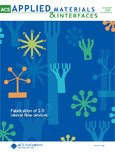
ACS Applied Materials & Interfaces
Advancing the Frontiers of Applied Materials and InterfacesACS Applied Materials & Interfaces, published by the American Chemical Society, stands as a leading journal in the field of applied materials, nanotechnology, and interdisciplinary research in medicine. With an impressive Impact Factor that places it in the Q1 category across Materials Science, Medicine, and Nanoscience and Nanotechnology, this journal consistently ranks among the top tier, evidencing its significance and influence in advancing scientific knowledge. The journal’s scopus ranking of 33 out of 463 in General Materials Science further underscores its critical role in disseminating innovative and high-quality research. Although it is not an open-access journal, a diverse range of access options is available, ensuring that vital research findings are accessible to a broad audience of researchers, professionals, and students. Targeting breakthroughs in the synthesis, characterization, and application of materials and interfaces, ACS Applied Materials & Interfaces serves as a pivotal platform for publishing cutting-edge studies essential for future technological advancements.

Digest Journal of Nanomaterials and Biostructures
Bridging Disciplines with Cutting-edge Research in NanoscienceThe Digest Journal of Nanomaterials and Biostructures, published by VIRTUAL CO PHYSICS SRL, is a premier open-access journal since 2006, focusing on the dynamic intersections of nanotechnology, biostructures, and material science. Based in Romania, this journal caters to a diverse readership of researchers, professionals, and students in fields such as nanoscience, biomedical engineering, and condensed matter physics. Despite its current Q4 ranking in multiple categories, including Atomic and Molecular Physics and Structural Biology, the journal serves as a valuable platform for disseminating innovative research and fostering collaboration across scientific disciplines. The journal’s commitment to open access ensures that groundbreaking findings in nanomaterials are readily available to a global audience, reflecting the increasing importance of interdisciplinary research in addressing contemporary challenges. With its ongoing evolution and the potential for high-impact contributions to the scientific community, Digest Journal of Nanomaterials and Biostructures plays a crucial role in advancing knowledge and innovation in its respective fields.
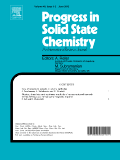
PROGRESS IN SOLID STATE CHEMISTRY
Illuminating Pathways in Solid State ChemistryPROGRESS IN SOLID STATE CHEMISTRY, published by PERGAMON-ELSEVIER SCIENCE LTD, serves as a pivotal platform for disseminating cutting-edge research and advancements in the field of solid state chemistry. With an impressive impact factor and a respected status, this journal consistently ranks in the Q1 category across multiple disciplines, including Condensed Matter Physics, Materials Science, and Physical and Theoretical Chemistry. Following a rigorous peer-review process, it features articles that explore theoretical frameworks and experimental findings, thereby fostering innovation and collaboration among researchers and professionals. Although it does not adopt an open access model, its substantial reach and high Scopus rankings—19th in Condensed Matter Physics, 14th in Physical and Theoretical Chemistry, and 48th in General Materials Science—underscore its influence in shaping the future of materials research. Established in 1964, the journal continues to contribute significantly to the academic community, bridging the gap between theory and practical application in solid state materials.
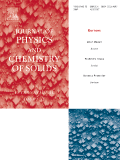
JOURNAL OF PHYSICS AND CHEMISTRY OF SOLIDS
Catalyzing Innovation in Condensed Matter ScienceJOURNAL OF PHYSICS AND CHEMISTRY OF SOLIDS, published by Pergamon-Elsevier Science Ltd, is a distinguished international journal that has been at the forefront of disseminating cutting-edge research in the fields of physics, chemistry, and materials science since its inception in 1956. This journal, which is recognized for its high impact in the Q2 category across multiple subjects—including Chemistry (miscellaneous), Condensed Matter Physics, and Materials Science—serves as a vital platform for researchers, professionals, and students to engage with significant advances in solid-state physics and chemistry. With Scopus rankings placing it in the top 15% of its field across various domains, the journal plays a crucial role in shaping the scientific dialogue surrounding materials properties, synthesis, and applications. Although it does not currently offer open access options, the presented research is widely recognized for its quality and relevance, ensuring that published works contribute meaningfully to ongoing scholarly discussions.

Organics is a peer-reviewed journal dedicated to the advancement of research in the field of organic chemistry, published by MDPI, a renowned leader in open access publication. Since its inception in 2020, the journal has embraced an open access model, ensuring that cutting-edge research is freely available to researchers, professionals, and students worldwide. With a current impact factor reflecting its relevance in the community, Organics aims to provide a platform for high-quality research, reviews, and insights that foster innovation and collaboration in the organic chemistry domain. The journal's scope encompasses a broad range of topics within organic chemistry, making it an essential resource for those involved in various research endeavors. As it converges from 2020 to 2024, Organics is set to build on its solid foundation and enhance its scholarly contributions by attracting significant research contributions that align with the latest scientific developments. Based in Basel, Switzerland, the journal's commitment to quality and accessibility resonates strongly with today's research landscape, making it a pivotal asset for anyone invested in the future of organic chemistry.

Materials Today
Driving Excellence in Material InnovationsMaterials Today is a premier academic journal published by Elsevier Science Ltd, specializing in the dynamic fields of materials science, mechanical engineering, and condensed matter physics. Established in 1999, the journal has garnered an enviable reputation, consistently ranking in the Q1 category across multiple disciplines including mechanics of materials and general materials science, reflecting its influence and high-quality research output. With an impressive Scopus ranking—4th in both mechanical engineering and mechanics of materials, and 6th in condensed matter physics—Materials Today serves as an essential resource for researchers, professionals, and students seeking to stay at the forefront of developments in material innovations and applications. The journal is known for its commitment to publishing significant research findings and reviews, making it a vital platform for disseminating knowledge and fostering collaboration in the rapidly evolving materials field. Although it does not offer open access, its robust impact factor underscores the importance of the content published, ensuring wide visibility and citation among the academic community. Explore the rich tapestry of materials research with Materials Today, where groundbreaking insights pave the way for future technological advancements.
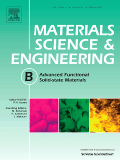
Materials Science and Engineering B-Advanced Functional Solid-State Materials
Advancing the Future of Solid-State MaterialsMaterials Science and Engineering B: Advanced Functional Solid-State Materials, published by Elsevier, stands as a pivotal platform in the realm of materials science, focusing on the development and characterization of advanced solid-state materials. With an ISSN of 0921-5107 and E-ISSN of 1873-4944, this journal operates out of the United Kingdom and addresses critical issues in condensed matter physics, mechanical engineering, and mechanics of materials. Its consistent recognition, evident in its Q2 quartile rankings across multiple engineering and physics categories and a respectable scope of convergence from 1988 to 2024, signifies its substantial contribution to the field. Researchers and professionals seeking a venue for cutting-edge work will appreciate the journal's commitment to advancing knowledge in functional materials, with its open access features ensuring that innovative findings are readily accessible. Join a community of leading scholars engaging with the latest advancements, shaping the future of materials science.
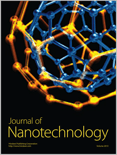
Journal of Nanotechnology
Catalyzing Progress in the Field of NanotechnologyThe Journal of Nanotechnology, published by Hindawi Ltd., is a premier open-access platform dedicated to delivering high-quality research in the dynamic field of nanotechnology. With the ISSN 1687-9503 and E-ISSN 1687-9511, this journal has been at the forefront of disseminating innovative findings since its transition to open access in 2009, fostering a global dialogue among researchers, professionals, and students. Based in Egypt, the journal maintains its commitment to advancing the material science sector, currently holding a prestigious Q2 ranking in the 2023 Materials Science (miscellaneous) category, reflecting its significant contribution to the field. With a Scopus ranking of #162 out of 463 journals in General Materials Science, placing it in the 65th percentile, the Journal of Nanotechnology serves as a crucial resource for those looking to explore the latest advancements and applications in nanomaterials. The journal invites submissions that align with its scope, which emphasizes interdisciplinary approaches and novel methodologies, promising to enhance both academic and practical aspects of nanotechnology.